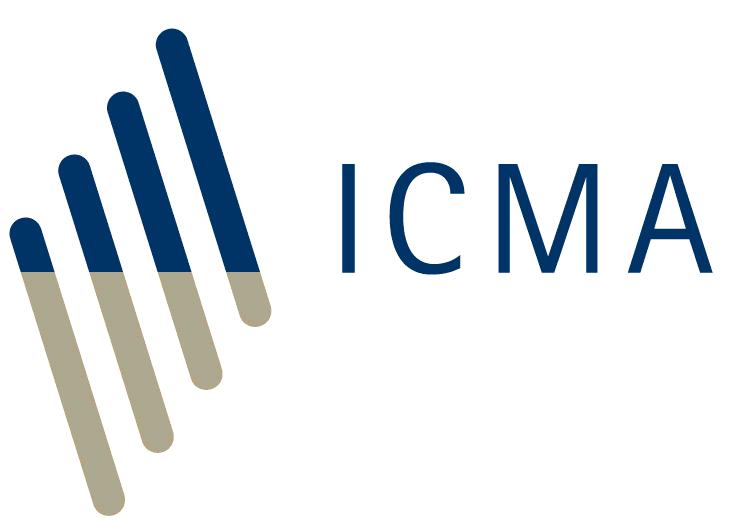This phrase phrase was coined by two academics, Gary Gorton and Andrew Metrick of Harvard University, in a paper published in 2010, which has had a major influence on the regulatory debate on the pro-cyclicality of haircuts, spawning the idea of a minimum mandatory haircut and changes to the treatment of repo in insolvency.* Unfortunately, there are fundamental flaws in the calibration of their model.
Gorton and Metrick argue that the Great Financial Crisis of 2007-08 was akin to a traditional banking deposit panic but was precipitated specifically by a run on the repo market, which they describe as being part of the 'securitised banking' market. Securitized banking is defined as the business of packaging and re-selling loans, with repo as the source of funding. Gorton and Metrick propose that deepening haircuts reduced the value of collateral to such an extent that it forced massive deleveraging in the financial system. Firms from which repo funding was progressively withdrawn by the imposition of higher and higher haircuts were forced to deleverage by selling assets. The resulting fire sales amplified and aggravated the crisis. The importance attached to the Gorton and Metrick hypothesis derives in large part from the empirical evidence they employ in the form of a set of data series on collateral haircuts taken on 10 classes of highly structured securities by a large (but anonymous) US broker-dealer between 2007 and 2009.
The main shortcoming with Gorton and Metrick’s data is that it only includes highly structured securities (ABS, RMBS, CMBS, CLO and CDO). Gorton and Metrick mistakenly assume that the collateral used in the US repo market is ‘very often’ securitized bonds. They offer no data on US Treasuries and Agencies, which constitute by far the largest pool of repo collateral in the US, and ignore evidence from the tri-party market, which may have accounted for almost two-thirds of outstanding US repo. This is significant because, although the US Task Force on Tri-Party Repo Infrastructure (2009) concluded that ‘tri-party repo arrangements were at the center of the liquidity pressures faced by securities firms at the height of the financial crisis’, they concluded that the available data suggested that initial margins in the tri-party repo market did not increase much during the crisis, if at all. They observed that, ‘It appears that some tri-party repo investors prefer to stop financing a dealer rather than increase [initial] margins to protect themselves’. This point was also made by the BIS Committee on the Global Financial System (CGFS) Study Group. Gorton and Metrick ignore the reduction or closing of credit limits and the shortening of lending. There is also no recognition of the evaporation of unsecured credit. They are therefore simply incorrect to attribute the entire deleveraging of the US financial system and loss of liquidity in the US money market to the dynamics of the repo market in the form of deepening haircuts.
While Gorton and Metrick’s analysis may have overestimated the impact of haircuts/initial margins in the US market, critics claim that it says even less about the European repo market, which has a very different structure to the US market.
- Some 80% of collateral in the European repo market was government securities at the time. Structured securities were a very small component. Most structured securities in the European market are managed as tri-party repos. ICMA data suggests such collateral accounted for no more than 10% of tri-party repo, which itself was about 10% of the wider European repo market.
- The US market is largely overnight, whereas in Europe, only 18.3% of outstanding contracts were one-day maturities in June 2007 (ICMA survey). In a market dominated by one-day maturities, variation margin is redundant. Valuation changes will be reflected entirely in adjustments to haircuts/initial margins, which also factor in forward-looking risks, making for potentially more abrupt changes in collateral value than margin calls. In a market like Europe, the extended maturity distribution means variation margin is more significant and haircuts/initial margins will change less frequently.
These doubts have been reinforced by a study by Krishnamurthy, Nagel and Orlov, who make the point that 'much of the discussion of the repo market has run ahead of our measurement of the repo market.'*** They derived a new data set from regulatory and industry sources on investment in the US repo market by money market mutual funds and securities lenders cash reinvestment desks. These institutions are estimated to have provided some two-thirds of the cash borrowed by shadow banks in the US repo market in 2007. Krishnamurthy et al calculated that only some 3% of non-Agency MBS and ABS were financed by repo bought by money market mutual funds and securities lenders. Most of their repo collateral was US Treasuries or Agencies (80% for money market mutual funds and 65% for securities lenders). While there was a deterioration in repo terms (rates, maturities and haircuts) for structured security collateral, there was no contraction in purchases of repo against Treasuries and Agencies. Krishnamurthy et al also observed no increase in haircuts on Treasury and Agency collateral. Moreover, in the tri-party market, they measured only modest increases in haircuts for structured securities and corporate bonds, from 3-4% in 2007 to 5-7% in 2009, compared to the changes in Gorton and Metrick’s data for structured securities in the bilateral repo market, which showed haircuts often rising from 0% to in excess of 50%. The evidence is once again that, rather than increasing haircuts, market users initially responded to the crisis by reducing or withdrawing credit lines, shortening the terms for which they were willing to lend and narrowing the range of eligible collateral. The conclusion is that repo was not key to the funding of shadow banking and had a modest impact on changes in aggregate funding conditions.
Finally, it is worth noting that, during the Great Financial Crisis, although the repo market was not free of stress, it continued to function, in sharp contrast to the unsecured money market, which largely evaporated. Papadia and Välimäki estimate that, between 2008 and 2011, the unsecured eurozone money market shrank by EUR 327 billion, forcing the ECB into exceptional emergency lending in order to prevent a seizure of the financial system and serious damage to the real economy. In fact, the ECB lent EUR 115 billion. But growth in the repo market contributed another EUR 212 billion, without which, the burden on the ECB would have been dramatically greater.
*Gorton, Gary, & Andrew Metrick, Securitized Banking and the Run on Repo (9 November 2010).
**Haircuts and initial margins in the repo market, ICMA (8 February 2012).
***Krishnamurthy, Arvind, Stefan Nagel and Dmitry Orlov, Sizing Up Repo, Stanford University (November 2011).
Back to Frequently Asked Questions on Repo contents page
<<< Previous page Next page >>>







